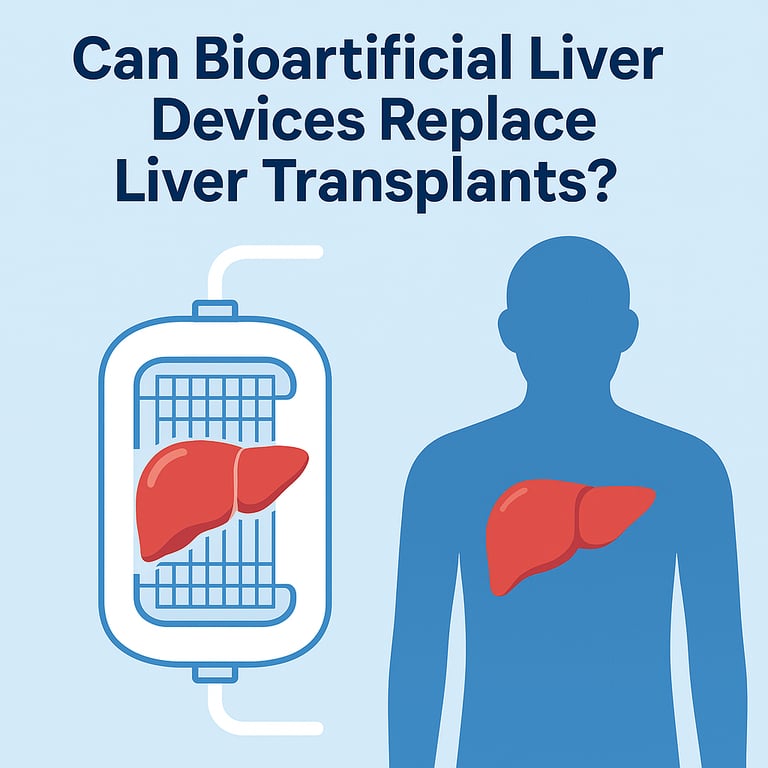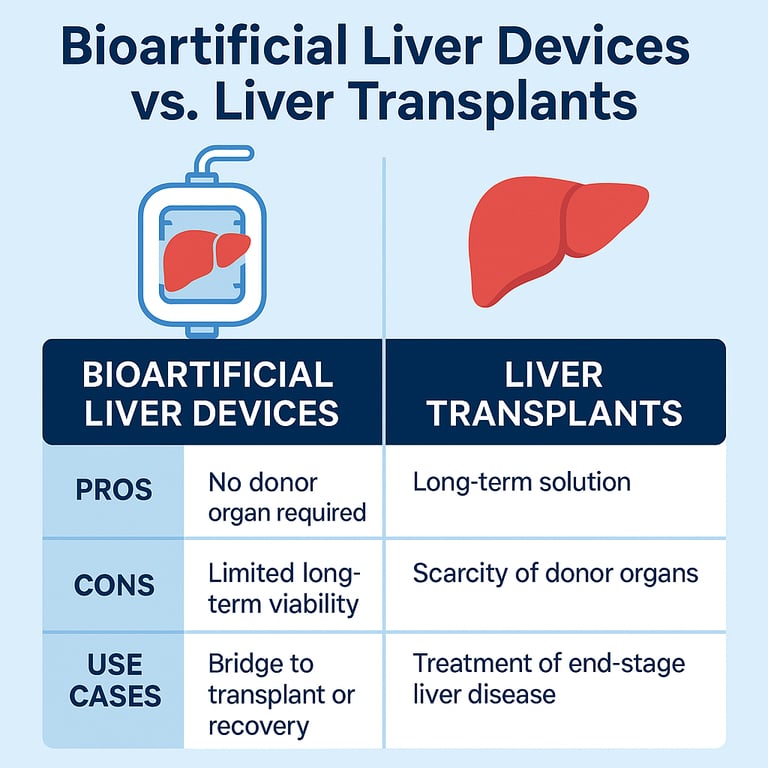Can Bioartificial Liver Devices Replace Liver Transplants?
Liver transplants save lives—but with limited donors, bioartificial liver (BAL) devices are emerging as a high-tech alternative. Can they fully replace transplants? Let’s explore the science, current research, and future outlook.
4/4/20252 min read


🩺 The Problem: A Global Shortage of Livers
Liver failure is a leading cause of death worldwide, with over a million deaths annually due to chronic liver disease. For many, the only curative treatment is a liver transplant. But there's a problem—donor organs are in short supply. Thousands of patients die each year while waiting on transplant lists. This crisis has spurred innovation in alternatives to organ transplantation. One of the most promising technologies? Bioartificial liver (BAL) devices.
🧬 What Are Bioartificial Liver Devices?
Bioartificial liver devices are hybrid systems designed to temporarily perform some of the liver’s essential functions. Unlike traditional artificial organs, BAL systems incorporate living cells—typically hepatocytes (liver cells)—to support biological functions like detoxification, metabolism, and protein synthesis.
Think of them as "biological dialysis machines" for the liver, offering a bridge to transplant or recovery.
🏥 Liver Transplantation: The Current Gold Standard
Liver transplants have become increasingly successful, with 5-year survival rates around 75%. However, they come with significant challenges:
Severe organ shortages
Lifelong immunosuppression
High financial costs
Surgical risks and complications
So the question arises: Can BAL devices reduce or even eliminate the need for transplants?
⚖️ BAL Devices vs. Transplants: A Comparison
Currently, BAL devices are not a full replacement, but they offer crucial "bridge" therapy—keeping patients alive until a transplant or liver regeneration can occur.
🔬 Real-World Examples and Research
Several BAL systems have reached the clinical trial stage:
ELAD (Vital Therapies): Used human hepatoblastoma-derived cells to treat acute liver failure. Despite early promise, its Phase III trial didn’t meet primary endpoints.
HepaStem / HepaCart: Explores using stem-cell-derived hepatocytes for metabolic support.
MELS (Modular Extracorporeal Liver Support): Combines artificial detox modules with bioreactors containing pig hepatocytes.
While some trials show improvement in short-term survival and liver function, none have yet demonstrated superiority over standard care in large-scale trials.
⚙️ Key Challenges Blocking Full Replacement
Cell Viability: Hepatocytes used in BAL systems often degrade quickly.
Immunological Issues: Risk of immune reaction to animal or donor cells.
Scaling & Manufacturing: Difficult to maintain enough viable cells for large-scale use.
Lack of Full Functionality: BALs can't yet replicate all liver tasks, especially in chronic liver disease.
🚀 The Future: Closer Than You Think?
Exciting advancements are on the horizon:
Stem-cell derived hepatocytes may offer better performance and compatibility.
3D bioprinting and liver organoids are enabling the creation of mini-livers for testing and possibly transplantation.
AI-powered monitoring systems could personalize and optimize BAL therapy.
Experts predict that within 10–15 years, we might see implantable or wearable liver-support systems that offer more than just a bridge—but for now, they remain in experimental stages.
🧾 Conclusion: Not a Replacement—Yet
Bioartificial liver devices hold tremendous potential, especially as bridging therapies for acute liver failure or to support detoxification while the liver recovers. But due to current technological and biological limitations, they can't fully replace liver transplantation—yet.
That said, continued research, better biomaterials, and stem cell advances are closing the gap. The future of liver support may not rely solely on transplantation, and BAL devices could soon become a standard part of liver failure management.
📩 Stay Ahead of the Curve
Want to stay updated on bioartificial organ technology and medical device innovation?
Subscribe to the MedTech Options newsletter for fresh insights, clinical updates, and device deep-dives every week.


